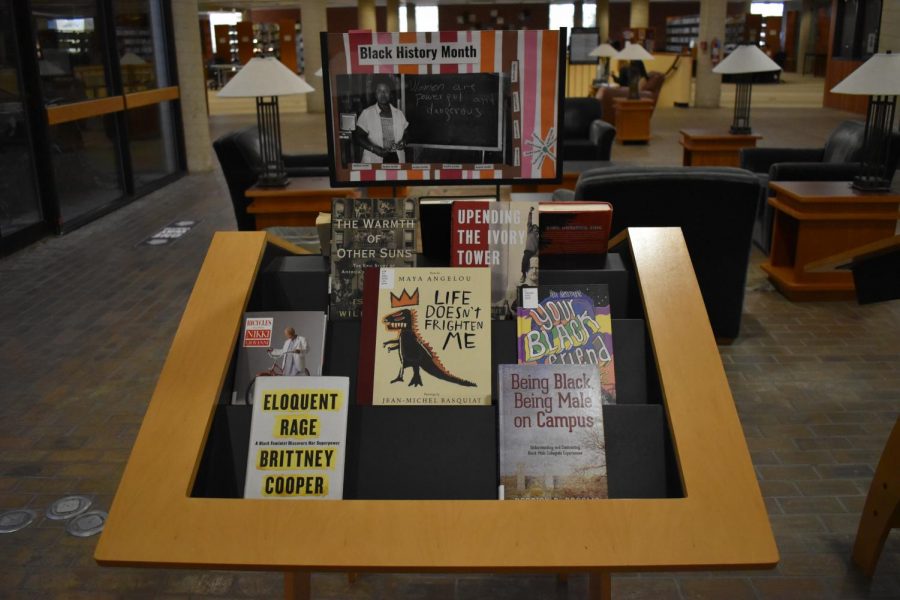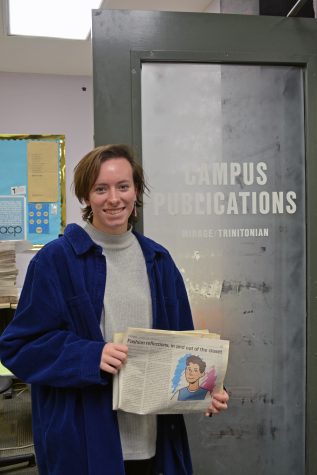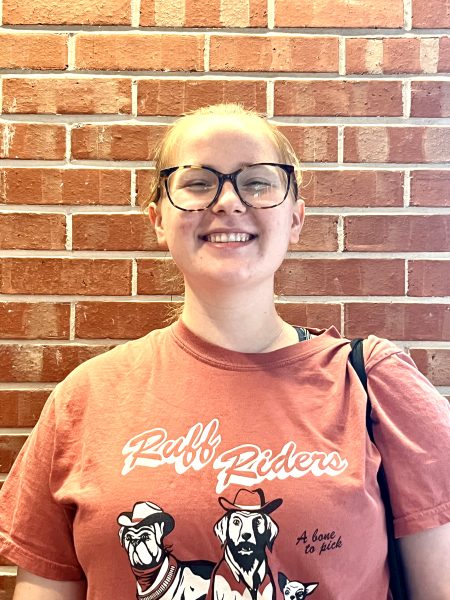Getting Involved with Black History Month
The SDIO Director highlights the importance of Black History Month
Black History Month set up in the library
In response to Trinity students’ call for increased diversity and inclusion, Trinity’s Student Diversity and Inclusion Office has been working on programming for Black History Month.
The director of Student Diversity and Inclusion, Courtney Balderas, spoke about what the SDIO does, what it is doing for Black History Month and what the Trinity community can do going forward.
“The purpose of SDIO is to ensure that the Trinity University values of diversity and inclusion are integral and tangible in the academic and professional development journey of each student. Through active engagement with social justice, equity and inclusive practices we help students understand and support our marginalized populations,” Balderas said.
Black History Month is a time dedicated to celebrating the Black community in February.
“[It’s a time] to further expand our knowledge of the history, significance and struggles of our Black community and to celebrate their great achievements and contributions to our nation and our communities,” Balderas said.
Balderas was able to tell us about what Black History Month was like at Trinity and what the Student Diversity and Inclusion Office did for the Black community at Trinity.
“We kicked off the month with our first Diversity Diner by featuring The Jerk Shack and focusing on the importance of soul food and food justice within the Black community,” Balderas said.
SDIO also maintained a very active social media presence during Black History Month.
“[We had] Motivational Mondays highlighting the inspiring words of Black individuals, Tuesdays providing self-care and advocacy toolkits, Wednesdays highlighting famous Black activists, athletes, poets, etc., Thursdays connecting students with locally run Black nonprofits, and Fridays celebrating Black culture,” Balderas said.
Trinity’s work, and our personal work, towards diversity and inclusion does not stop with the end of Black History Month, and Balderas was able to share with us ways we can learn about and celebrate the Black community.
“There are lots of organizations and events happening locally and nationwide. Additionally, PBS has quite a few documentaries and lots of free content,” Balderas said.
One of these documentaries was shown during Black History Month, but if you missed it, you can still watch it on PBS.
“PBS-San Antonio based documentary, ‘Living in My Skin.’ Hear raw and sometimes heartbreaking stories about what it’s like to be a Black man or boy in San Antonio. Thirty-three Black males, ranging in age from 10 to 90, tell stories they seldom share with people outside their race. This two-part series aims to create a deeper understanding of race relations in our community and foster a deeper cultural understanding of each other’s lives and feelings,” Balderas said.
Going forward, if you want to know what the Student Diversity and Inclusion Office will continue to do to help the Black community, there are resources where you can learn about Trinity’s policies.
“Check out our page, [and] if you have not already, read through the Diversity and Inclusion Task Force report,” Balderas said.
Additionally, if you have any suggestions for more that Trinity can do, you make them known.
“We have begun prioritizing and addressing many of the recommendations starting this past fall [2020] and will continue to make progress through this spring semester. We will be providing updates and opportunities for students to continue to provide us with feedback. The SDIO is an excellent resource, and I am always available to assist,” Balderas said.

My name is Claire Sammons and I am an Anthropology and Communications double major. I have worked for the Trinitonian since fall of 2020. I became a photographer...
















